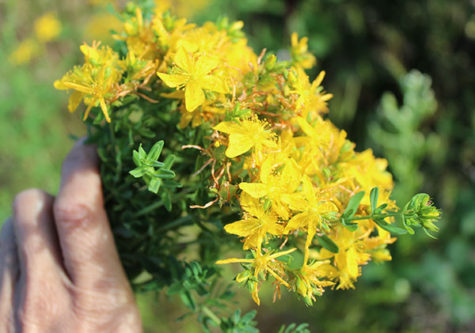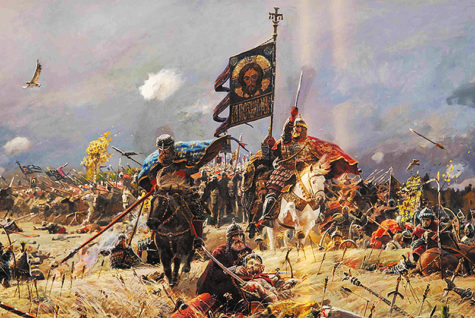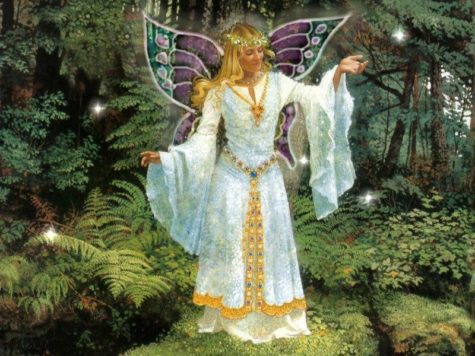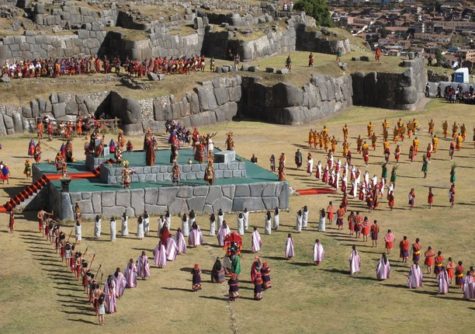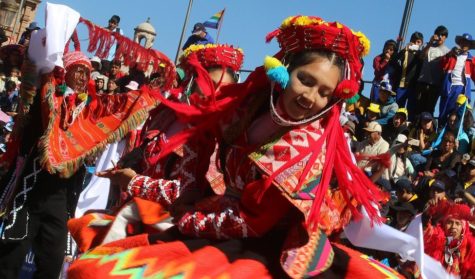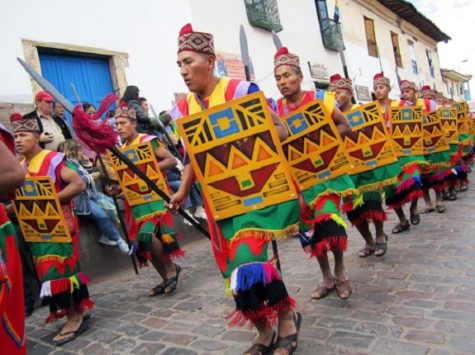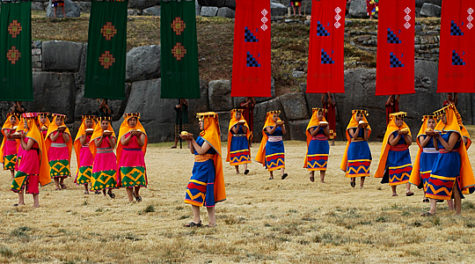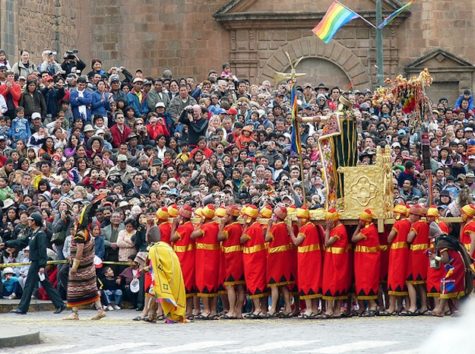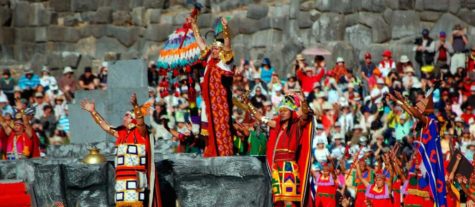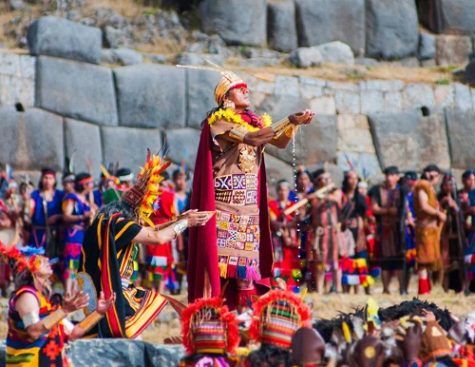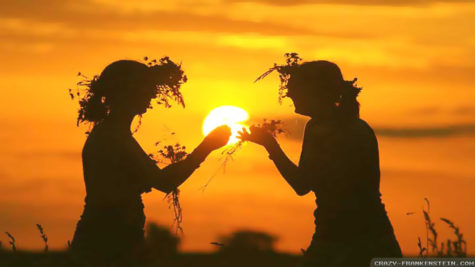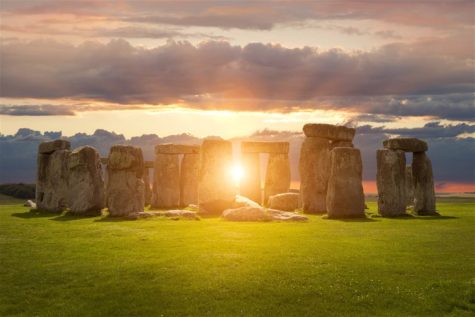Monthly Archives: June 2017
In the English region of East Anglia, those who continue to follow the ancient ways believe that June 29 is the prime day of the year to harvest herbs for healing use.
Here are some great tips for harvesting herbs:
For the highest quality, herbs should be harvested before the Sun gets too high in the sky. The heat of the Sun will evaporate the essential oil from the herbs, so picking earlier in the day (like by 10:30am) ensures that the highest amount of oils will still be present within them.
When getting plants from the wild, respect the area and plant you are harvesting, never strip a plant bare, never pull it out by the roots to get a few leaves and I always check to see that there are other plants of the same species around and its not some rare almost extinct plant. Also be very sure that the plant you are about to pick is what you think it is, Mother Nature can be very tricky sometimes, and 2 seemingly identical plants can have very different effects when ingested. It is best to ask permission of the plant before taking it’s bounty, and remember, respect, respect, respect!
Transporting your herbs must be done carefully to retain their valuable powers. It’s best to take an open-topped basket or cotton bag with you and some layers of tissue so that herbs can be transported dry and safe back to home, it is pointless seeking out a special plant, than sticking it into a carrier bag in your pocket so it sweats, bruises and it unidentifiable mush by the time you get home.
It is best not to harvest any herbs that have been growing close to the road as the leaves take in the carbon monoxide and poisonous fumes given out by the traffic and take it down into the plant to the root where it becomes stored. Do not pick wild herbs and plants from verges or thoroughfares as this contravenes several laws and also the fact that most areas like these are open to our friendly dog and cat population.
If harvesting wild plants leave a large amount of flowers, seed and root as the plant population of that area will very quickly die out if you go in mob-handed and wrench up the only two plants for miles around.
To harvest herbs in a magickal way visit this post: Harvesting Magickal Herbs in a Magickal Way
Vidovdan (St. Vitus Day) is one of the important religious holidays for the Serbs. It’s annually observed on 28 June (Gregorian Calendar), or 15 June according to the Julian calendar, in use by the Serbian Orthodox Church to venerate St. Vitus. It is an important part of Serb ethnic and Serbian national identity.
Observation of this feast is connected with the Battle of Kosovo in 1389. According to the Serbian Orthodox tradition, the Serbian national identity was founded on the day, when the Ottoman Empire defeated Serbia in the Battle of Kosovo and slew prince Lazar. Ruling sultan of the Ottoman Empire was killed on the same day by Serbian knight Miloš Obilić.
Serbs consider Vidovdan a very important day, that is why many historic events in Serbia took place on June 28, for instance, signing of the Treaty of Versailles (1919), proclamation of Serbian constitution (1921), Slobodan Milošević’s deportation to the International Criminal Tribunal, etc.
In the late Middle Ages, people in Germany and countries such as Latvia celebrated the feast of Vitus by dancing before his statue. This dancing became popular and the name “Saint Vitus Dance” was given to the neurological disorder Sydenham’s chorea. It also led to Vitus being considered the patron saint of dancers and of entertainers in general.
It is also a day for weather watching:
“If St. Vitus’ Day be rainy weather,
It will rain for 30 days together.”
About St Vitus:
There are no reliable facts about existence of Saint Vitus. According to Christian legend, Vitus was the son of Roman senator from Sicily. He converted to Christianity under influence of his mentor. Satin Vitus died as a martyr during the persecution of Christians by Roman Emperors Diocletian and Maximian.
Vitus is considered the patron saint of actors, comedians, dancers, and epileptics, similarly to Genesius of Rome. He is also said to protect against lightning strikes, animal attacks and oversleeping.
Sources: Wikipedia and Any Day Guide
The Fête de la Saint-Jean-Baptiste, held annually on June 24, is the feast day of St John the Baptist, a Jewish preacher who according to the Christian tradition, baptized Jesus in the River Jordan. It is a day of celebration in Quebec and other areas of French Canada. The feast day of Saint John the Baptist or Midsummer was a very popular event in the Ancien Régime of France, and it is still celebrated as a religious feast day in several countries, like Denmark, Norway, Sweden, Finland, Estonia, Spain, Latvia and Lithuania.
Other names for this holiday include the following:
- Saint Jean Baptiste Day
- La Saint-Jean
- St John the Baptist Day
- Fête nationale du Québec
- Quebec’s National Holiday
This is a historical, cultural, national and religious holiday. It is observed by Quebecers, French Canadians, French Americans. Celebrations include parades, bonfires, fireworks, feasting, drinking, musical concerts, flag waving, patriotic speeches, and contests.
Symbols
The flag of Quebec and the fleurs-de-lis are widespread symbols of Saint Jean Baptiste Day. Many people choose to wear blue or white clothing to the celebrations. The fleurs-de-lis represents the flower of an iris or a lily. The fleurs-de-lis is also associated with the Virgin Mary and her purity. It was a symbol of French speaking people and their kings after King Clovis I converted to Christianity in the year 493. It was taken from the papal seal or coat-of-arms when the king converted, to symbolize the strength and significance of the French nation in its union with the Papal state. Quebec’s flag is one-and-a half times as wide as it is high and has a blue background. The background is divided into four rectangles by a cross and each of the four rectangles contains a single white fleurs-de-lis.
What Do People Do?
Various events are organized on Saint Jean Baptiste Day. These range from large scale public celebrations, such as rock and jazz concerts, sports tournaments, parades and firework displays, to small family or neighborhood happenings, such as yard sales, picnics, barbecues, bonfires and children’s entertainment. Many church bells ring in celebration and public dances and fun fairs are held. Some events may be held on the evening of June 23 and many are broadcast live on television, radio or on the Internet. The celebrations are coordinated by the Mouvement national des Québécoises et des Québécois.
Public Life
Saint Jean Baptiste Day is a public holiday in the Canadian province of Quebec. Post offices and many stores are closed. Public transport services run to a reduced schedule in some places or may not run at all in other areas, such as the province’s rural regions. If June 24 falls on a Sunday, the same day is a paid day off for those who work on Sunday. June 25 becomes a paid day off for workers who do not ordinarily work on Sunday.
Background
In ancient times, the summer solstice was honored around June 21. Midsummer festivals, such as those linked with the June solstice, were held in Europe for thousands of years. In the fifth century, Christianity spread through France. When people converted to Christianity, elements of these festivals were combined with feast days for Christian saints. June 24 – the feast day of St John was substituted for the pagan Midsummer celebrations. Traditionally, bonfires would be lit on the eve of June 24 in order to honor the saint.
In France, the celebrations around the feast day of Saint John the Baptist were widely enjoyed and French colonists introduced these traditions to North America.
The patriotic tone of the Saint Jean Baptiste Day celebrations began in 1834. In that year Ludger Duvernay, an influential journalist, visited the St Patrick’s Day celebrations in Montreal, and was inspired to create a similar event for French Canadians. In 1843, he established the Saint Jean Baptiste Society to promote the celebration of Saint Jean Baptiste Day. This organization was supported by the Catholic Church, which saw it as a way to promote social and moral progress. In 1908 St John the Baptist was designated as the patron Saint of Quebec, re-enforcing the connection between Saint Jean Baptiste Day and French-Canadian patriotism.
The celebrations were supported by the Catholic Church and were primarily religious around that time. The lighting of bonfires, a traditional custom on the Nativity of Saint John which ultimately reached back to pre-Christian Midsummer celebrations were still lit at night. In addition, the first Saint-Jean-Baptiste parades were organized. They became an important tradition over time. The procession of allegorical floats was introduced in 1874.
During and after World War I, Saint Jean Baptiste Day was barely celebrated, but in 1925 Saint Jean Baptiste Day became a provincial holiday in Quebec. After a period in the 1960s, when the structure of society in Quebec changed greatly, this holiday became very political. During the Quiet Revolution, the event took a political turn, with many riots and protests taking place.
However, in 1977 Saint Jean Baptiste Day was recognized as the ‘national’ holiday of Quebec and the mood of the celebrations gradually moved towards that of the secular celebrations in modern times.
By making it a statutory holiday, the day became a holiday for all Quebecers rather than only those of French-Canadian or Catholic origins. Celebrations were gradually secularized. While the religious significance of the civic celebration is gone, the day remains popularly called la St-Jean-Baptiste or simply la St-Jean and is still observed in churches.
Collected from various sources
People in the western Carpathian Mountains and other parts of Romania celebrate the Sânziene holiday annually, on June 24. This is similar to the Swedish Midsummer holiday, and is believed to be a pagan celebration of the summer solstice in June.
Sânziană is the Romanian name for gentle fairies who play an important part in local folklore, also used to designate the Galium verum or Cruciata laevipes flowers. Under the plural form Sânziene, the word designates an annual festival in the fairies’ honor. Etymologically, the name stands for sân (common abbreviation of sfânt – “saint”, “holy”) and zână (a word used for fairies in general).
According to the official position of the Romanian Orthodox Church, the customs actually relate to the celebration of Saint John the Baptist’s Nativity, which also happens on June 24.
The folk practices of Sânziene imply that the most beautiful maidens in the village dress in white and spend all day searching for and picking Galium verum. They are instructed to remain alone and unseen, especially by any males. Using the flowers they picked during the day, the girls create wreaths as floral crowns which they wear upon returning to the village at nightfall. They are then supposed to have turned into sânziene fairies, and dance in circle around a bonfire, into which all remains of the previous harvest are thrown. People are prevented from speaking to the girls during this ceremony, as it is presumed that the sânziene spirits possessing them might otherwise be angered or distracted.
In some regions, the girls may keep the wreaths until the following year’s Sânziene. This, they believe, ensures a fertility for their family’s land. In addition, if they place the wreath under their pillow the night right after Sânziene, it is possible that they would have a premonition of the man they are to marry (ursitul, “the fated one”). Another folk belief is that during the Sânziene night, the heavens open up, making it an adequate time for making wishes and for praying, as God is more likely to listen.
In some areas of the Carpathians, the villagers then light a big wheel of hay from the ceremonial bonfire and push it down a hill. This has been interpreted as a symbol for the setting sun (from the solstice to come and until the midwinter solstice, the days will be getting shorter).
In cultural reference. The consequences of heavens opening on Sânziene are connected by some to paranormal events reported during that period of each year. According to popular beliefs, strange things, both positive and negative, may happen to a person wandering alone on Sânziene night. Strange ethereal activities are believed to happen especially in places such as the Băneasa forest (near the capital of Bucharest) or the Baciu forest (near the city of Cluj-Napoca).
From: Wikipedia
Cancer is the fourth sign of the zodiac. The sun enters Cancer at slightly different times each year, usually around June 22, sometimes the day before or the day after.
- Symbol: The Crab
- Element: Water
- Gemstone: Ruby
- Keyword: I Feel
Cancer is ruled by the moon, which emphasizes the sensitive, emotional side of our natures. Cancers love the security of home and family, and enjoy the responsibility of parenthood. They enjoy buying things for their homes, and many of them build up collections of objects that appeal to them. Cancerians are loyal friends and are always willing to provide a shoulder to lean on when others need it. Cancerians are highly intuitive, and can sum people up at a glance.
From 365 Goddess, we have this for today:
- Themes: Kinship; Protection; Kindness; Moon; Love; Devotion; Fertility; Relationships
- Symbols: Fish; Moon; Silver (lunar), Blue Items (her favorite color); Crab
- Presiding Goddess: Lady of Regla
About the Lady of Regla:
This West Indian fish mother swims in with summer rains as the bearer of fertility, family unity, prospective life mates, and other traditionally lunar energies. Shown in art looking much like a mermaid, the Lady of Regla is also the patroness of this astrological sign.
To Do Today:
In astrology, those born under the sign of Cancer have a great deal of compassion, desire family closeness and stability, and are ruled by the moon, all of which characterize this goddess’s energies to a tee. How you emphasize those powers depends on what you need. For harmony at home, add blue highlights to your decorating scheme, and wear pale blue clothing when having difficult conversations.
Eat fish or crab today to digest a little extra self-love or empathy, or to encourage fertility in any area of your life. To spice up this magic, serve the fish with a bit of lemon juice – a fruit that emphasizes devotion and kinship.
If you’d like to dream of future loves or get the Lady of Regla’s perspective on a difficult family situation, leave her an offering of yams before going to bed. According to local custom, this invokes Regla’s favor and you will experience helpful night visions – so take notes!
More About the Sun in Cancer:
The Sun is in Cancer from June 21 to July 21, depending on the year.
- Ruler: the Moon
- Modality: Cardinal
- Season: Summer
- Metal: Silver
- Stone: Pearl, Opal
- Color: White, Yellow
- Flower: Moon Flower, Rhododendron
- Anatomy: Breasts, stomach
- Attributes: gentle, conservative, feeling, nurturing, defensive, contemplative.
Sun in Cancer natives have a strong survival instinct. They are protective of those they care about, and of themselves too. They are often quite reticent about sharing their inner selves to the rest of the world, and are often caught up in reminisce.
Cancers have a reputation for moodiness, although this trait is most evident when the Moon is in Cancer. Cancer needs roots. They resist change to an extent, and concern themselves about being secure and safe in most everything they do.
Cancers can be quite intrigued by objects with history attached to them — antiques, photos, souvenirs, and the like.
Cancer is a very sensitive sign, and they don’t always appreciate it when you are blunt with them. Their reactions to hurt will depend on how thick a shell they have developed. Most Cancers react by withdrawing or retreating. Some have developed an ability to manipulate others to get what they want. They avoid direct confrontations almost as a rule.
Cancers are, in fact, quite yielding and soft when you have them in the right mood. They are one of the more hospitable signs of the zodiac. Sure, they can be touchy and indirect, but they are also very dependable, caring souls.
Source: Cafe Astrology
The Inti Raymi (Quechua for “sun festival”) is a religious ceremony of the Inca Empire in honor of the god Inti (Quechua for “sun”), one of the most venerated deities in Inca religion. It was the celebration of the winter solstice – the shortest day of the year in terms of the time between sunrise and sunset and the Inca New Year.
Note:
In territories south of the equator the gregorian months of June and July are winter months. It is held on June 24.
During the Inca Empire, the Inti Raymi was the most important of four ceremonies celebrated in Cusco. The celebration took place in the Haukaypata or the main plaza in the city.
According to chronicler Garcilaso de la Vega, Sapa Inca Pachacuti created the Inti Raymi to celebrate the new year in the Andes of the Southern Hemisphere. The ceremony was also said to indicate the mythical origin of the Incas. It lasted for nine days and was filled with colorful dances and processions, as well as animal sacrifices to thank Pachamama and to ensure a good cropping season.
The first Inti Raymi was in 1412. The last Inti Raymi with the Inca Emperor’s presence was carried out in 1535, after which the Spanish and the Catholic priests banned it.
In 1944, a historical reconstruction of the Inti Raymi was directed by Faustino Espinoza Navarro and indigenous actors. The first reconstruction was largely based on the chronicles of Garcilaso de la Vega and only referred to the religious ceremony. Since 1944, a theatrical representation of the Inti Raymi has been taking place at Saksaywaman, two kilometers from its original celebration in central Cusco on June 24 of each year, attracting thousands of tourists and local visitors.
 Inti Raymi is still celebrated in indigenous cultures throughout the Andes. Celebrations involve music, colorful costumes (most notable the woven aya huma mask) and the sharing of food.
Inti Raymi is still celebrated in indigenous cultures throughout the Andes. Celebrations involve music, colorful costumes (most notable the woven aya huma mask) and the sharing of food.
In many parts of the Andes though, this celebration has been connected to the western festivals of Saint John the Baptist, which falls on the day after the northern solstice (June 21).
The celebration of Midsummer’s Eve was from ancient times linked to the summer solstice. The dates that Midsummer is celebrated vary slightly from year to year, and from country to country. In Sweden, Midsummer Day is publicly celebrated during a weekend between June 20 and 26. In other countries, it is celebrated on the date of the Summer Solstice which falls between June 20 and June 21.
People believed that mid-summer plants had miraculous and healing powers and they therefore picked them on this night. Bonfires were lit to protect against evil spirits which were believed to roam freely when the sun was turning southwards again.
The solstice itself has remained a special moment of the annual cycle of the year since Neolithic times. These ancient observances were not on the day as we define it – at midnight or at dawn. Instead the celebrations began on the pre-Christian beginning of the day, which falls on the previous evening.
More about these summer celebrations can be found here:
- 2-1/2 gallons water
- 1 cup meadowsweet herb
- 1 cup woodruff sprigs
- 1 cup heather flowers
- 3 cloves
- 1 cup honey
- 1/4 cup brown sugar
- 1 cup barley malt
- 1 oz. brewer’s yeast
Pour the water into a large cauldron or kettle. Bring to a boil and add the meadowsweet herb, woodruff sprigs, heather flowers, and cloves. Boil for one hour and the add the honey, brown sugar, and barley malt. Stir thirteen times in a clockwise direction and then remove from heat.
Strain through a cheesecloth and allow the mead to cool to room temperature. Stir in the brewer’s yeast. Cover with a clean towel and let it stand for one day and one night. Strain again, bottle, and then store in a cool place until ready to serve.
Midsummer Ritual Mead is an ideal drink to serve at Summer Solstice Sabbats, as well as during all Cakes and Ale Ceremonies and Esbats.
From: The Wicca Spellbook
“Solstice” is derived from two Latin words: “sol” meaning sun, and “sistere,” to cause to stand still. This is because, as the summer solstice approaches, the noonday sun rises higher and higher in the sky on each successive day. On the day of the solstice, it rises an imperceptible amount, compared to the day before. In this sense, it “stands still.”
(In the southern hemisphere, the summer solstice is celebrated in December, also when the night time is at a minimum and the daytime is at a maximum.)
Why does the summer solstice happen?
On this day, typically June 21, the daytime hours are at a maximum in the Northern hemisphere, and night time is at a minimum. It is officially the first day of summer. It is also referred to as Midsummer because it is roughly the middle of the growing season throughout much of Europe.
The seasons of the year are caused by the 23.5° tilt of the earth’s axis. Because the earth is rotating like a top or gyroscope, the North Pole points in a fixed direction continuously — towards a point in space near the North Star. But the earth is also revolving around the sun. During half of the year, the southern hemisphere is more exposed to the sun than is the northern hemisphere. During the rest of the year, the reverse is true.
At noontime in the Northern Hemisphere the sun appears high in the sky during summertime, and low during winter. The time of the year when the sun reaches its maximum elevation occurs on the summer solstice — the day with the greatest number of daylight hours. It typically occurs on, or within a day or two of, June 21, the first day of summer. The lowest elevation occurs about Dec 21 and is the winter solstice — the first day of winter, when the night time hours reach their maximum.
Activities for the Summer Solstice:
- Rise early on the summer solstice and greet the sun as it begins to brighten the sky.
- Create protective amulets out of rue, rowan and basil. Place these herbs in a clean white or gold cloth, and tie the cloth securely.
- Make a protective charm for your home or business. Tie a few cinnamon sticks together and position them over the door of your home or office.
- Consume foods that honor the power of the sun. Include foods that are yellow and orange. Lemons are particularly good for this purpose and can be consumed in desserts as well as in tea or lemonade.
- Leave some food out for the fairy folk that are active at midsummer. Good choices include milk, wine, honey, water and fresh bread.
Information collected from various sources
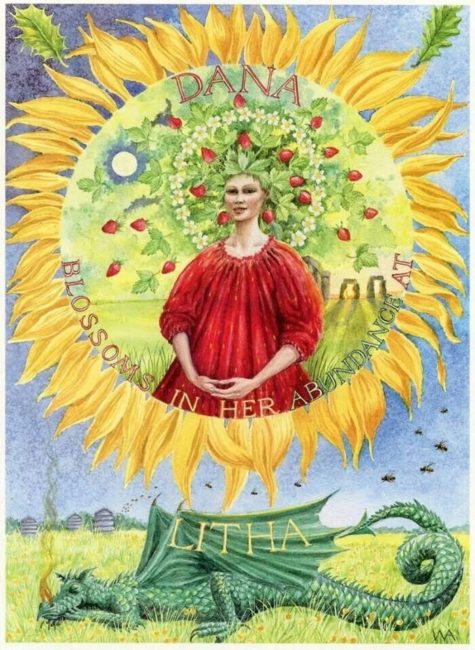 Litha (pronounced “LITH-ah”) is one of the Lesser Wiccan Sabbats and is usually celebrated on June 21st, but varies somewhat from the 20th to the 23rd, dependent upon the Earth’s rotation around the Sun (check the calendar).
Litha (pronounced “LITH-ah”) is one of the Lesser Wiccan Sabbats and is usually celebrated on June 21st, but varies somewhat from the 20th to the 23rd, dependent upon the Earth’s rotation around the Sun (check the calendar).
According to the old folklore calendar, Summer begins on Beltane (May 1st) and ends on Lughnassadh (August 1st), with the Summer Solstice midway between the two, marking MID-Summer. This makes more logical sense than suggesting that Summer begins on the day when the Sun’s power begins to wane and the days grow shorter.
The Litha Sabbat is a time to celebrate both work and leisure, it is a time for children and childlike play. It is a time to celebrate the ending of the waxing year and the beginning of the waning year, in preparation for the harvest to come. Midsummer is a time to absorb the Sun’s warming rays and it is another fertility Sabbat, not only for humans, but also for crops and animals.
Wiccans consider the Goddess to be heavy with pregnancy from the mating at Beltane – honor is given to Her. The Sun God is celebrated as the Sun is at its peak in the sky and we celebrate His approaching fatherhood – honor is also given to Him. The faeries abound at this time and it is customary to leave offerings – such as food or herbs – for them in the evening.
The cycle of fertility has been expressed in many god-forms. One pair of these – which has persisted from early Pagan times to modern folklore – is that of the Oak King and the Holly King, Gods respectively of the Waxing Year and the Waning Year. The Oak King rules from Midwinter to Midsummer – the period of Fertility, Expansion and Growth; while the Holly King reigns from Midsummer to Midwinter – the period of Harvest, Withdrawal and Wisdom.
They are the light and dark twins, each being the other’s alternate self, thus being one. Each represents a necessary phase in the natural rhythm, therefore both are good. At the two changeover points, they symbolically meet in combat. The incoming twin – the Oak King at Midwinter, the Holly King at Midsummer – “slays” the outgoing one. But the defeated twin is not actually considered dead – he has merely withdrawn during the six months of his brother’s rule.
On Midsummer Night, field and forest elves, sprites, and fairies abound in great numbers – making this a great time to commune with them. Litha is considered one of the best times to perform magicks of all kinds, for it is considered a time of great magickal power. Especially effective magick and spells at this time include the performance of those for love, healing and prosperity. A wreath can be made for your door with yellow feathers for prosperity and red feathers for sexuality – intertwined and tied together with ivy.
This is also a very good time to perform blessings and protection spells for your pets or other animals. You may want to choose to include your pet within your cast Circle at this Sabbat celebration, and even present him or her with a special gift (such as a tiny pentacle to attach to his or her collar). I have done this and found it very rewarding and heartwarming.
Nurturing and love are key actions related to Midsummer. If you haven’t yet done so, Litha is a good time to perform your Self-Dedication Ceremony… or – if you have been practicing Wicca for a while – you may choose to perform a simple Re-dedication/Affirmation as a part of your Sabbat celebration. Ritual actions for Litha might include placing a flower-ringed cauldron upon your altar, plunging of the sword (or athame) into the cauldron, balefire leaping (outdoors) and the gathering and drying of herbs. Herbs can be dried over the ritual fire if you’re celebrating outdoors. Leap the bonfire for purification and renewed energy. Ritually, use mirrors to capture the light of the Sun or the flames of the fire.
Found at: Fortune City
